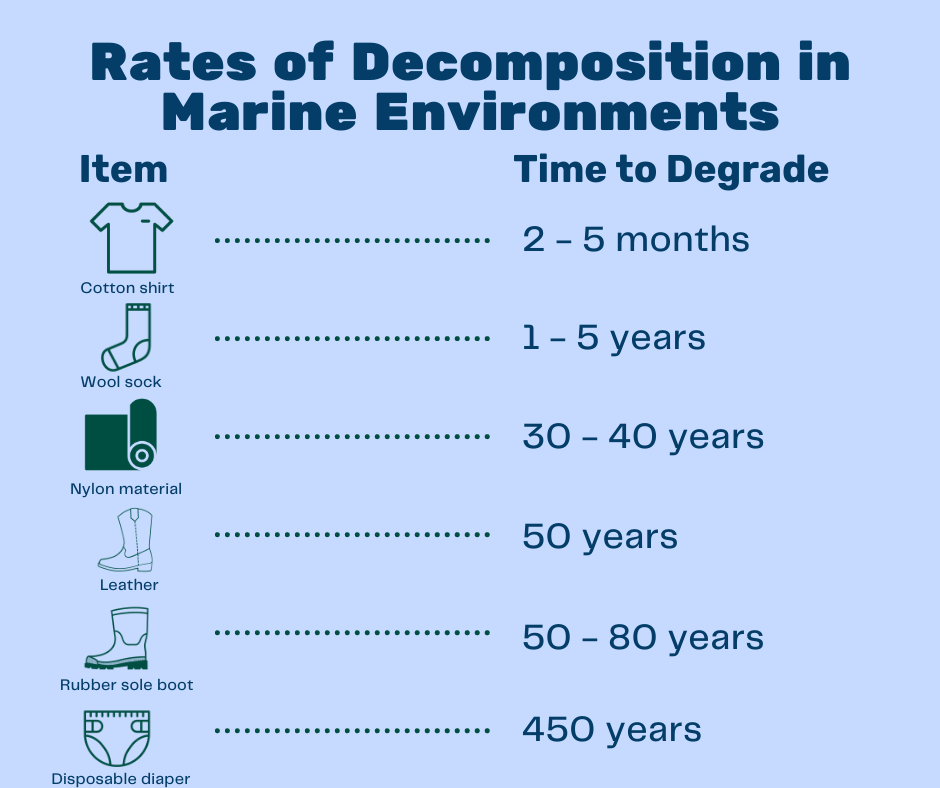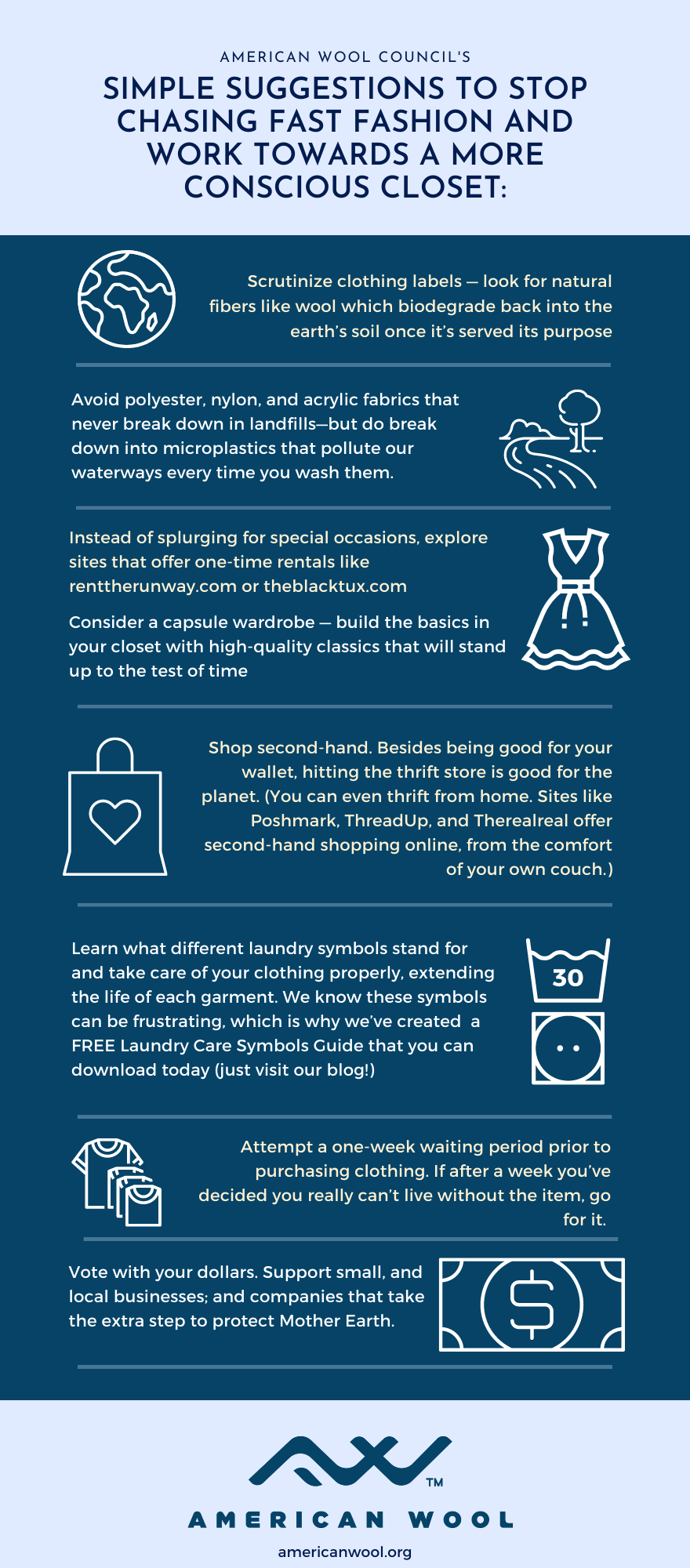Today’s retail consumers are thinking more ethically than ever before. As people shop for all different types of products, they want to know about their sources of origin, and how and where they were made. As a result, the concept of fast fashion vs. slow fashion has come to the forefront over the last few years.
Fast fashion, a retail strategy driven by hyper-consumerism across the globe, is the practice of using the lowest cost labor and materials at every step of the supply chain to produce newer, faster, low-price options for consumers. Like fast food, this menu of fast fashion options is not about quality. Instead, it’s about driving down price to drive up higher consumption of low quality, cheaply made, almost disposable clothing.
The Envrionmental and Human Impact
From the perspective of many retailers, fast fashion is beneficial because it encourages consumers to make frequent visits to stores to buy more and more garments. But the fact of the matter is those garments don’t hold up. From an environmental perspective, fast fashion is creating a bleak scenario. In the opening scene of the 2017 documentary “RiverBlue: Can Fashion Save the Planet,” deep magenta wastewater spills into a river in China. Fashion designer and activist Orsola de Castro speaks about the spill, stating: “There’s a joke in China that you can tell the ‘it’ color of the season by looking at the color of the rivers.” Seventy percent of Chinese rivers and lakes are contaminated by the 2.5 billion gallons of wastewater produced by the textile industry.
-
-
-
-
- In the U.S., fast fashion may not be seen in the rivers—but it is being buried in the ground and contaminating the earth.
- According to a July 2017 article in Forbes Magazine, 12.8 million tons of clothing are sent to landfills in the U.S. annually
- Cheaply made synthetic fabrics can sit for 200 years leaving toxic chemicals to contaminate local soil and groundwater.
-
-
-

Being cognizant of choosing long-lasting natural fabrics over synthetics can help extend the life of your wardrobe, reduce the amount of microplastics in our waterways, and help keep textiles out of landfills. Knowing how long it takes a material to decompose can help you make better choices when it comes to fashion. Wool can break down and biodegrade in marine environments in as little as one year, while rubber could take up to 80 years. Check out this short list that shows how long it takes various materials to biodegrade in the marine environment.
From a human rights perspective, fast fashion doesn’t fare any better. In the drive to create low costs, the biggest corners that fast fashion cuts are human. According to Forbes, the garment industry in second- and third-world countries is 80% staffed by women who are 18- to 24-years-old and a majority of whom earn less than $3 per day.
The questionable environmental and human rights questions of the fast fashion practices have caused many to embrace a “slow fashion” movement. Choosing more natural, sustainable materials like wool over polyester, and making purchases of higher-quality products that will last longer and, when they are no longer valuable, biodegrade back into the earth are key tenets of slow fashion. A general awareness of what you are buying and how it affects both people and our planet are paramount.
Ethical Fashion Takes on Retail

One of the more outspoken and recognized voices against fast fashion is Livia Firth. She has catapulted slow fashion and sustainable style into the spotlight and is the executive producer of the 2015 documentary “The True Cost”, and founder of Green Carpet Challenge, a project that aims to raise the profile of sustainability and social welfare by encouraging celebrities to wear ethical designs at high profile events.
At a global fashion summit in Copenhagen back in 2014, Firth laid her point of view on the table clearly and passionately. “From the consumer point of view is it really democratic to buy a tee shirt for five dollars or jeans for $20? Or are they taking us for a ride? Because they are making us believe we are rich and wealthy because we can buy a lot. But the only person becoming richer is the owner of the fast fashion brand. And that makes me a little bit angry.”
Firth’s energy has caught the attention of several major fashion players. Her consultancy firm, Eco-Age, provides bespoke sustainability solutions for brands looking to improve their supply chain. Her clients include luxury names like Chopard, Erdem, and Gucci. “She doesn’t stop. If you say no, she asks again. I admire that,” says Tom Ford. “She’s driven by a cause that she believes in, she’s driven to create ethical fashion.”
Fast fashion brands like Topshop, American Apparel, and Forever 21 want to produce fast and cheap. While most brands used to create new lines six to eight times a year; the clothing lines in fast fashion stores now change entirely in as little as two weeks. They defend this by saying it’s what the consumer wants. But as Livia Firth says, “I have children who want sugar all the time.”
Common Sense Consequences
Americans love to shop. And they love a good deal. But the idea that a global, fast fashion industry can deliver a garment to you for $10 should actually be an indicator that something is wrong. Creating that garment takes many elements that can include:
-
-
-
-
-
-
-
-
- agriculture
- materials
- shipping
- dyeing
-
-
-
-
-
-
-
- production
- packaging
- Human resources
When you take into account all of these supply chain considerations, spending just $10 for any piece of clothing should raise some red flags. In fast fashion the driver behind all those steps is the lowest cost. Environmental sustainability, fair trade practices, and human ethics have been at best a minimal concern.
For over a decade Firth has been passionate about encouraging people to talk and really think about the consequences of the things they choose to buy and to consider the real people who live work and struggle along the supply chain. And the effects of supporting that fast fashion supply chain on the environment.
She points out that “if you take fast fashion from the environmental perspective, you’re creating a huge pile of rubbish, because the average garment lasts in a wardrobe for less than five weeks.” From a human rights perspective, the ethics of fast fashion production in cities like Bangladesh are often brought into question. “There must be a solution that does not harm the environment and make slaves of low wage garment workers.”
What Can I Do?
While Firth and many others on both sides of the fashion issue try to sort out complex issues like trade agreements, human rights, and environmental sustainability, consumers are left with a question: What can I do?
It turns out that you can do a lot just by learning about the fashion industry online. Peruse the websites of organizations like Fashion Revolution, Wear Consciously, or Eco-Age and you’ll soon recognize that the relationship between you and what you buy is not about just the two of you. The item you pull from the rack and hold up in the mirror has already created a global effect. Armed with the right knowledge, you can not only find garments that make you look good, but you can rest assured that your dollars are doing good for the planet as well.
Wool is one of the earth’s most natural and sustainable textiles. It’s shorn and replenished annually and wool garments can literally last a lifetime. After your wool clothing item has served its purpose, it will biodegrade back into the soil. The benefits of this high-performing and dynamic fiber go beyond its moisture-wicking, breathable, and durable properties. Choosing wool means choosing Mother Earth.

